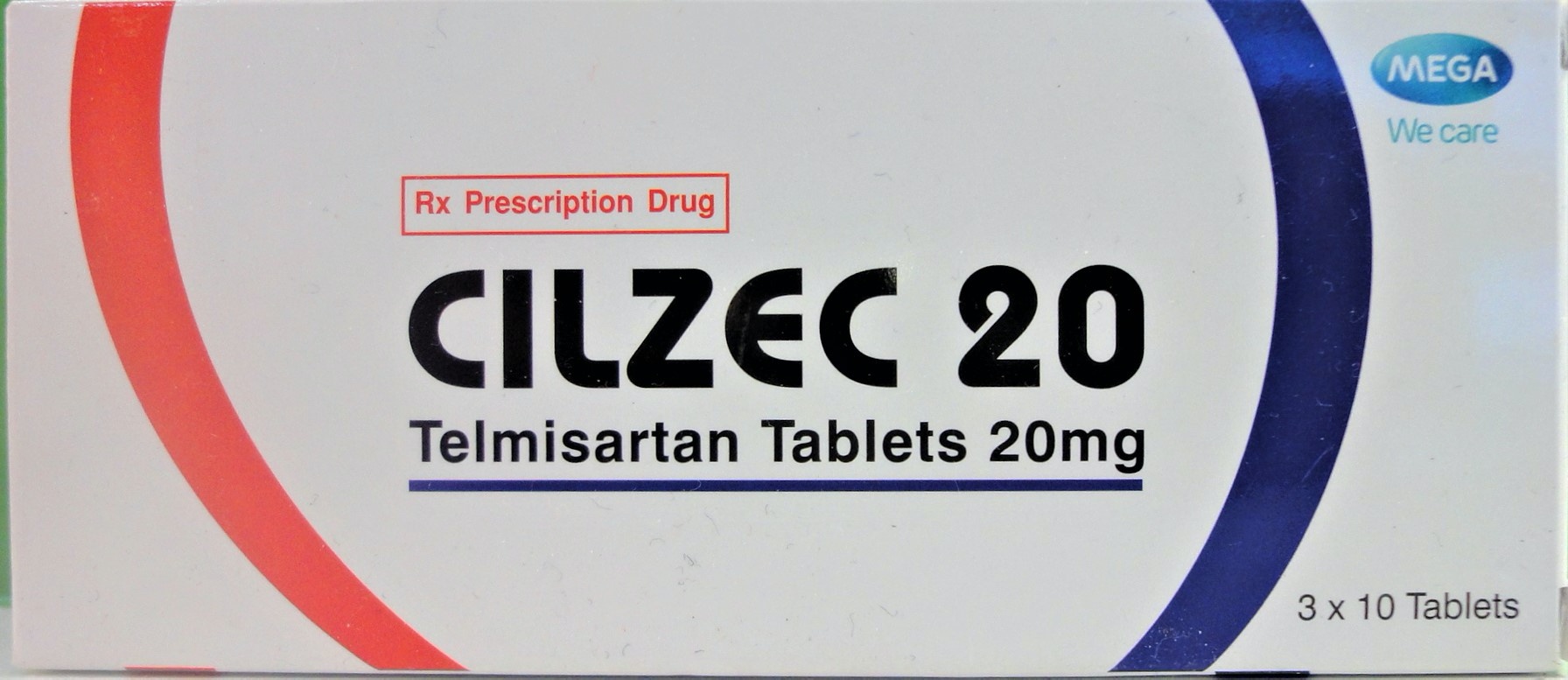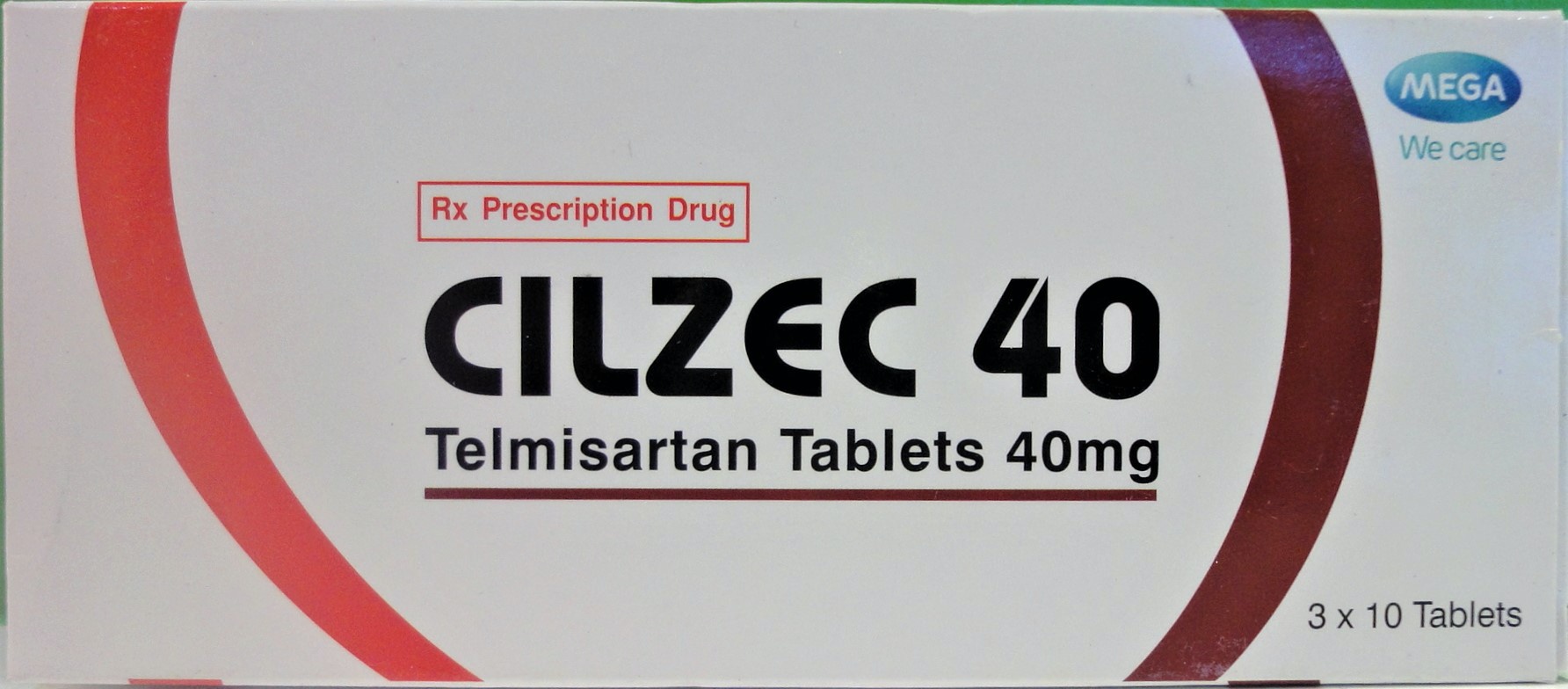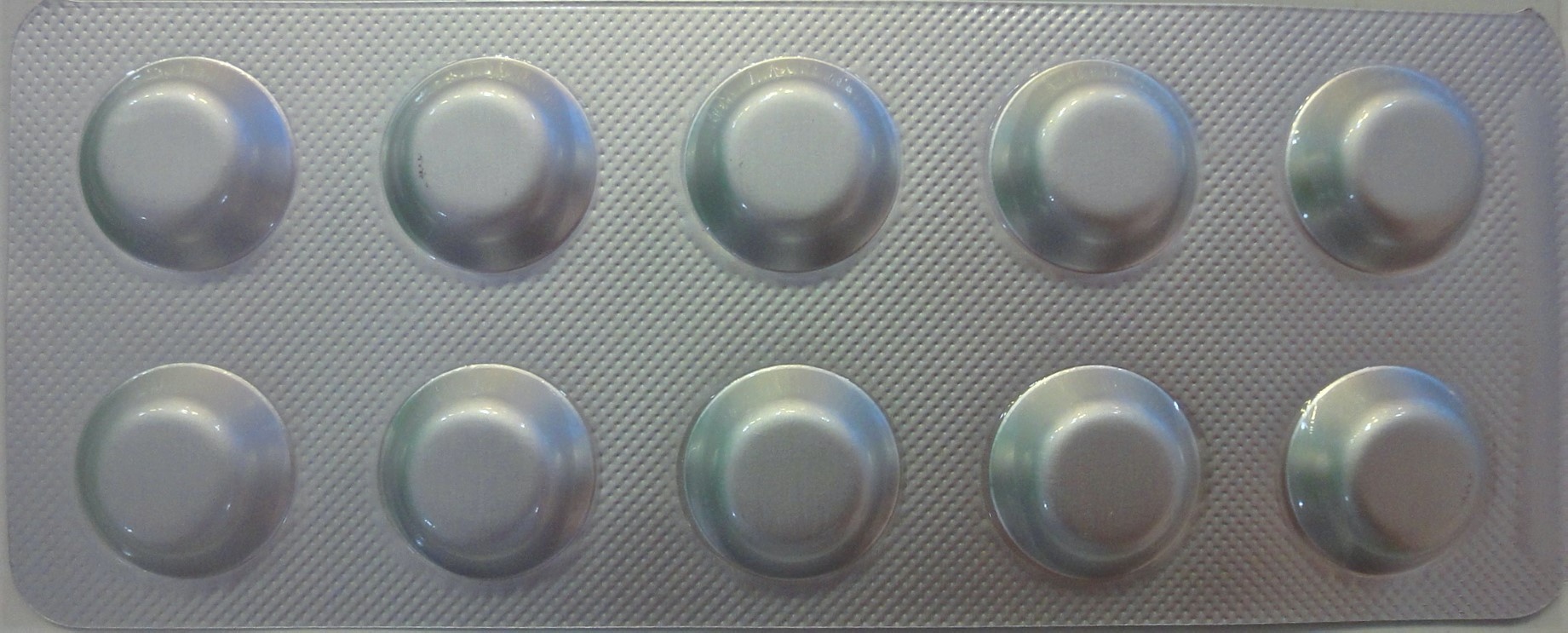CILZEC Tablet
ក្រុមហ៊ុនផលិតឱសថ:
MEGA LIFESCIENCES, Thailand
ក្រុមហ៊ុនចែកចាយឱសថនៅប្រទេសកម្ពុជា:
MEGA We care




- សារធាតុសកម្ម
- ប្រសិទ្ធិភាពព្យាបាល និង កម្រិតប្រើប្រាស់
- ហាមប្រើ
- ផលរំខាន
- អន្តរប្រតិកម្ម
- ស្ត្រីមានផ្ទៃពោះ និង ស្ត្រីបំបៅដោះកូន
- ការប្រុងប្រយ័ត្នជាពិសេស បរិយាយប័ណ្ណឱសថ
-
សារធាតុសកម្ម
1. CILZEC Tablet 20mg:
Telmisartan 20mg
2. CILZEC Tablet 40mg:
Telmisartan 40mg
3. CILZEC Tablet 80mg:
Telmisartan 80mg
-
ប្រសិទ្ធិភាពព្យាបាល និង កម្រិតប្រើប្រាស់
indicated for the treatment of hypertention. It may be used alone or in combination with other antihypertensive agents.
Dosage
Dosage must be individualized. The usual starting dose is 40mg once a day. Blood pressure response is dose related over the range of 20-80mg.
-
ហាមប្រើ
it is contraindicated in patients who are hypersensitivity to any component of this medicine.
-
ផលរំខាន
Adverse events like back pain, sinusitis, diarrhea, pharyngitis occurred at an incidence of 1% or more in patients treated with Telmisartan and at a greater rate than in patients treated with placebo, irrespective of their causal association.
In addition, the following events occurred at a rate of 1% but were at least as frequent in the placebo group: influenza-like symptoms, dyspepsia, myalgia, urinary tract infection, abdominal pain, headache, dizziness, pain, fatigue, coughing, hypertension, chest pain, nausea and peripheral edema. The incidence of adverse events is not dose-related and do not correlate with gender, age, or race of patients.
The incidence of cough occurring with Telmisartan was identical to that noted for placebo-treated patients (1.6%).
-
អន្តរប្រតិកម្ម
Digoxin, warfarin,
Other Drugs: Co-administration of Telmisartan did not result in a clinically significant interaction with acetaminophen, amlodipine, glibenclamide, simvastatin, hydrochlorothiazide or ibuprofen. Telmisartan is not metabolized by the cytochrome P450 system and had no effects in vitro on cytochrome P450 enzymes, except for some inhibition of CYP2C19. Telmisartan is not expected to interact with drugs that inhibit cytochrome P450 enzymes; it is also not expected to interact with drugs metabolized by cytochrome P450 enzyme, except for possible inhibition of the metabolism of drugs metabolized by CYP2C19.
Carcinogenesis, Mutagenesis, Impairment of Fertility
-
ស្ត្រីមានផ្ទៃពោះ និង ស្ត្រីបំបៅដោះកូន
Pregnancy
Female patients of childbearing age should be told about the consequences of second- and third-trimester exposure to drugs that act on the renin-angiotensin system, and they should also be told that these consequences do not appear to have resulted from intrauterine drug exposure that has been limited to the first trimester. These patients should be asked to report pregnancies to their physicians as soon as possible.
Nursing Mothers
It is not known whether Telmisartan is excreted in human milk, but Telmisartan was shown to be present in the milk of lactating rats. Because of the potential for adverse effects on the nursing infant, a decision should be made whether to discontinue nursing of discontinue the drug, taking into account the importance of the drug to the mother.
-
ការប្រុងប្រយ័ត្នជាពិសេស
Precautions
Fetal/ Neonatal Morbidity and Mortality
Drugs that act directly on the renin-angiotensin system can cause fetal and neonatal morbidity and death when administered to pregnant women. Several dozen cases have been reported in the world literature in patients who were taking angiotensin converting enzyme inhibitors. When pregnancy is detected. Telmisartan tablets should be discontinued as soon as possible.
The use of drugs that act directly on the renin-angiotensin system during the second and third trimesters of pregnancy has been associated with fetal and neonatal injury, including hypotension, neonatal skull hypoplasia, anuria, reversible or irreversible renal failure, and death. Oligohydramnios has also been reported, presumably resulting from decreased fetal renal function; oligohydramnios in this setting has been reported, although it is not clear whether these occurrences were due to exposure to the drug.severe renal and hepatic insufficiency.
Hypotension in Volume-Depleted Patients
In patients with an activated renin-angiotensin system, such as volume-and/or salt-depended patients (e.g., those being treated with high doses of diuretics), symptomatic hypotension may occur after initiation of therapy with Telmisartan tablets. This condition should be corrected prior to administration of Telmisartan tablets, or treatment should start if hypotension does occur, the patient should be placed in the supine position and, if necessary, given an intravenous infusion of normal saline. A transient hypotensive response is not a contraindication to further treatment, which usually can be continued without difficulty once the blood pressure has stabilized.
General
Impaired Hepatic Function: As the majority of Telmisartan is eliminated by biliary excretion, patients with biliary obstructive disorders or hepatic insufficiency can be expected to have reduced clearance.
Telmisartan tablets should be used with caution in these patients.
Impaired Renal Function: As a consequence of inhibiting the renin-angiotensin- aldosterone system, changes in renal function may be anticipated in susceptible individuals. In patients whose renal function may depend on the activity of the renin-angiotensin-aldosterone system (e.g., patients with severe congestive heart failure), treatment with angiotensin-converting enzyme inhibitors and angiotensin receptor antagonists has been associated with oliguria and/or progressive azotemia and (rarely) with acute renal failure and/or death. Similar results may be anticipated in patients treated with Telmisartan tablets.
Dual Blockage of the Renin-angiotensin-aldosterone System: As a consequence of inhibiting the renin-angiotensin-aldosterone system, changes in renal function (including acute renal failure) have been reported. Dual blockade of the renin-angiotensin-aldosterone system (e.g., by adding an ACE-inhibitor to an angiotensinⅡreceptor antagonist) should be used with caution and should include close monitoring of renal function.
*ព័ត៌មានឱសថត្រូវបានរៀបរៀងដោយ អ៊ីម៉ាតុគឹ មេឌីក (ខេមបូឌា) ដោយផ្អែកលើប្រភពព័ត៌មានខាងក្រោម។ សម្រាប់ព័ត៌មានលម្អិត សូមស្វែងរកនៅក្នុងក្រដាសព័ត៌មាននៃឱសថនីមួយៗ ឬ សាកសួរទៅកាន់ក្រុមហ៊ុនឱសថឬតំណាងចែកចាយនៃឱសថនីមួយៗ។
ប្រភពព័ត៌មាន៖
- ក្រដាសព័ត៌មាននៃឱសថសម្រាប់អ្នកជំនាញវេជ្ជសាស្ត្រដែលប្រើប្រាស់នៅប្រទេសជប៉ុន (Pharmaceutical and Medical Devices Agency, Pmda): https://www.pmda.go.jp
- ព័ត៌មានសង្ខេបនៃឱសថសម្រាប់អ្នកជំងឺដែលប្រើប្រាស់នៅប្រទេសជប៉ុន: http://www.rad-ar.or.jp
